
A lot has been written about using sRGB (or Adobe RGB) VS using ProPhoto RGB. Often, it is assumed that the purpose of PP RGB is to use a wider gamut of color-meaning more saturated color-but it can also be argued that it's useful for making sure that whatever the actual saturation an image may have remains unclipped. For it is a fact that many colors that a camera can capture (and even some colors that today's printers can print) fall outside the gamut of Adobe RGB, let alone sRGB.
So, as a little test, I offer the following; an image whose gamut of colors is not great yet has colors that are clipped when converting from the raw file to sRGB. I've provided a link to the original raw file (shot with a 1D MII Canon and whose DNG was output from Lightroom 1.0 as a DNG).
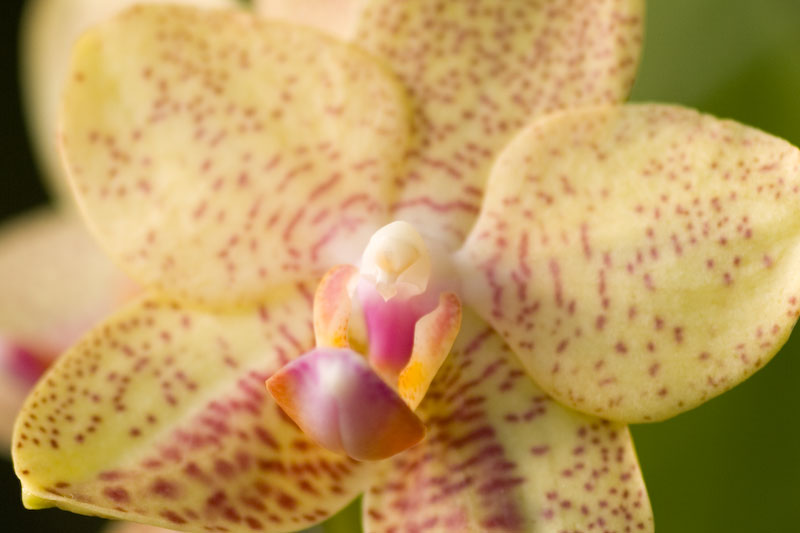
The image above was processed from Lightroom with minimal settings adjusted (see the DNG settings) into a 16 bit sRGB tiff file before being saved from Photoshop CS3 using Save For Web at High Quality JPG.
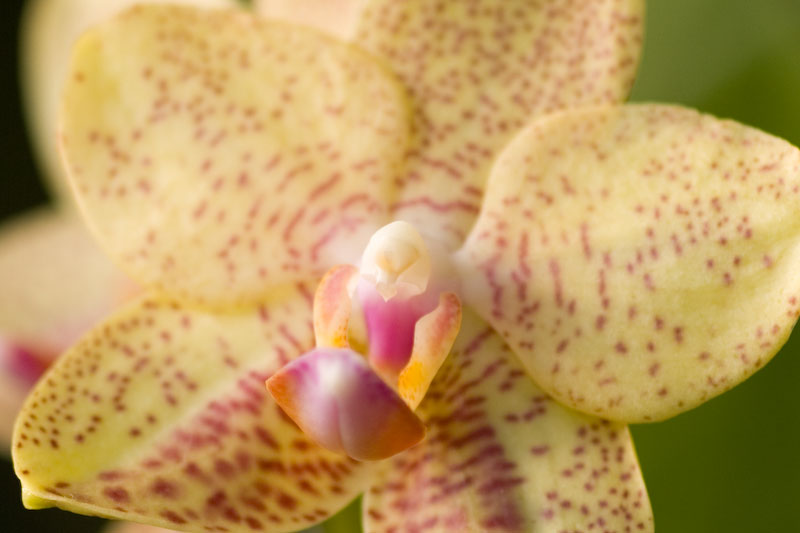
The image above was output as a 16 bit ProPhoto RGB file before being converted to sRGB and exported from Save For Web at High Quality JPG. As you can see from the two images, they appear very similar. But the problems of color clipping are easy to show.

By doing a + 12 Saturation adjustment on both images, the areas of color clipping become obvious...
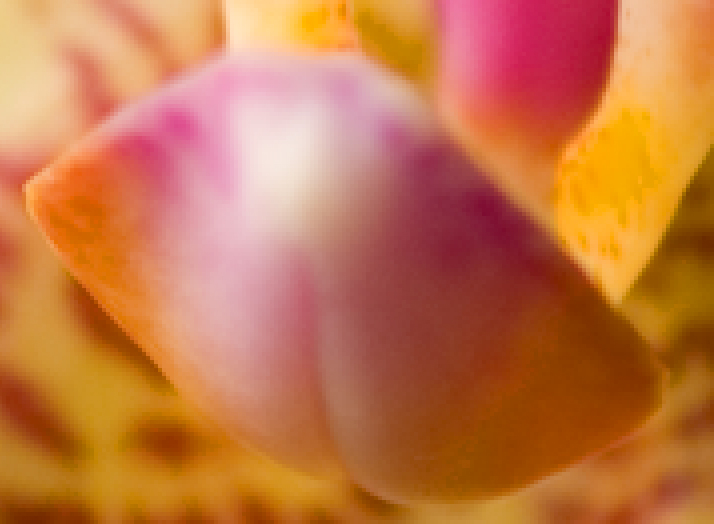
The above image is a small clip showing areas of abrupt color transition caused by color clipping. This was the result on the 16 bit sRGB image. It should be noted that what you are seeing is not the result of posterization caused by editing an 8 bit file-it's the result of showing where the colors have been clipped in the sRGB image using a Saturation adjustment.
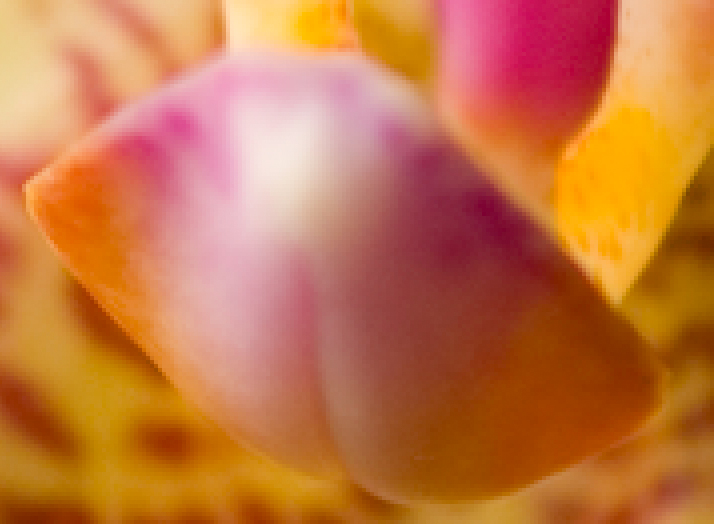
Here is the same section of the image whose saturation adjustment was done on the ProPhoto RGB image. You'll see no splotches of color. The image was converted to sRGB prior to using SFW. It should also be noted that both the sRGB and ProPhoto RGB images have been uprezed 400% using "Nearest Neighbor" to preserve the exact pixel results only shown larger for the web.
What does this prove? The results of color clipping for smaller working spaces-smaller than ProPhoto RGB can have a pretty ugly effect on your images. The color clipping shown above ironically actually shows very well when printing to an Epson K3 ink printer since the color of the clipped area is within the color gamut of the printer.
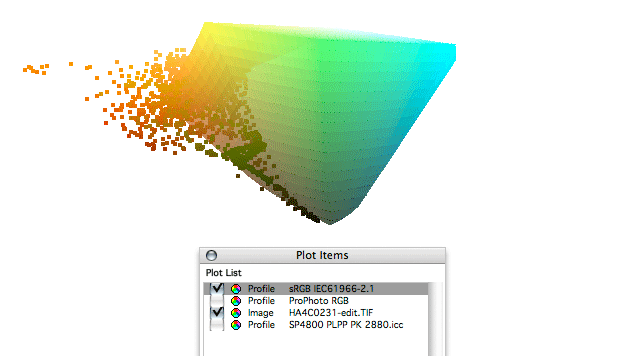
This image is a screenshot (done in ColorThink 2.12) that shows a 3D plot of sRGB (the shaded areas) and the actual image saved as a tiff in ProPhoto RGB and plotted as small squares. As you can see, the ProPhoto RGB image contains a lot of colors well outside of sRGB.
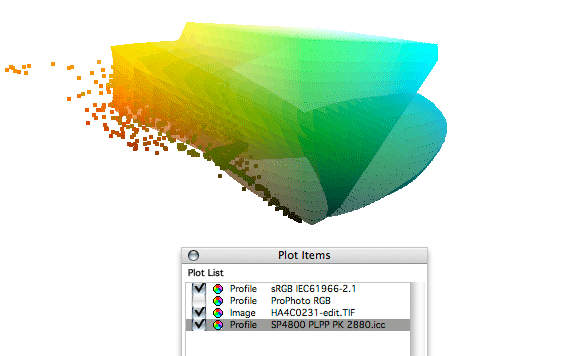
This screenshot shows both sRGB as well as a gamut plot (slightly larger color plot) whose colors also fall outside of sRGB. Note that some of the colors that fall outside of sRGB do indeed fall inside of the gamut of the printer-an Epson 4800 with Premium Luster Paper. So it's very clear that not only does the image contain colors that will be clipped by sRGB but colors that can still be printed on an Epson K3 printer.
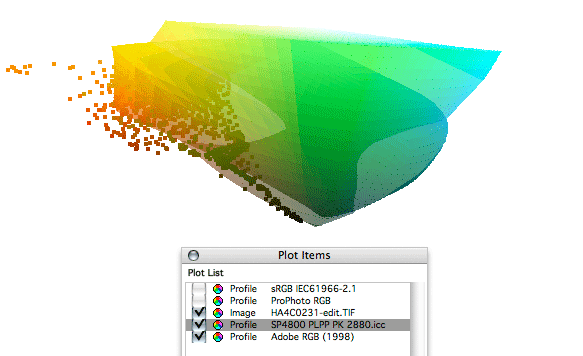
This screeds shows the image and the Adobe RGB gamut. Even with Adobe RGB's larger color gamut, there are still colors that will get clipped in Adobe RGB while still being able of being printed on an Epson K3 printer.
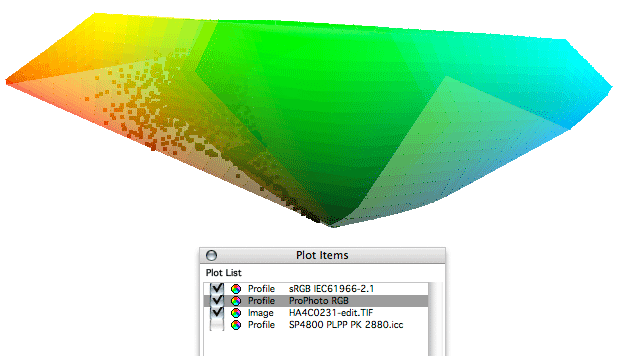
This is a gamut plot of ProPhoto RGB showing all color samples from the image falling within the color space (no clipping).
A note about this image: yes, ok, it's a flower. But notice the colors in the flower? Do you know what color human caucasian skin is? Right, primarily yellow. So, this experiment also has implications for photographers shooting people, not just flowers. Color clipping caused by a small gamut of color can have an impact on the smoothness and transitions of any image whose capture falls outside of the gamut of the smaller color space. And yes, there can be problems when using larger color spaces such as ProPhoto RGB-particularly if you have to deliver image files to other people who may not know what they are doing. I'll save that for another time. :~)
Download the original DNG file.
(the file is a zipped DNG file, 5.30MB)
NOTE: the image is ©2004 by Jeff Schewe and is being provided for
educational and testing purposes only. No rights other than these are
being granted. All other rights are reserved. By downloading, you are
agreeing to these terms.
![]()